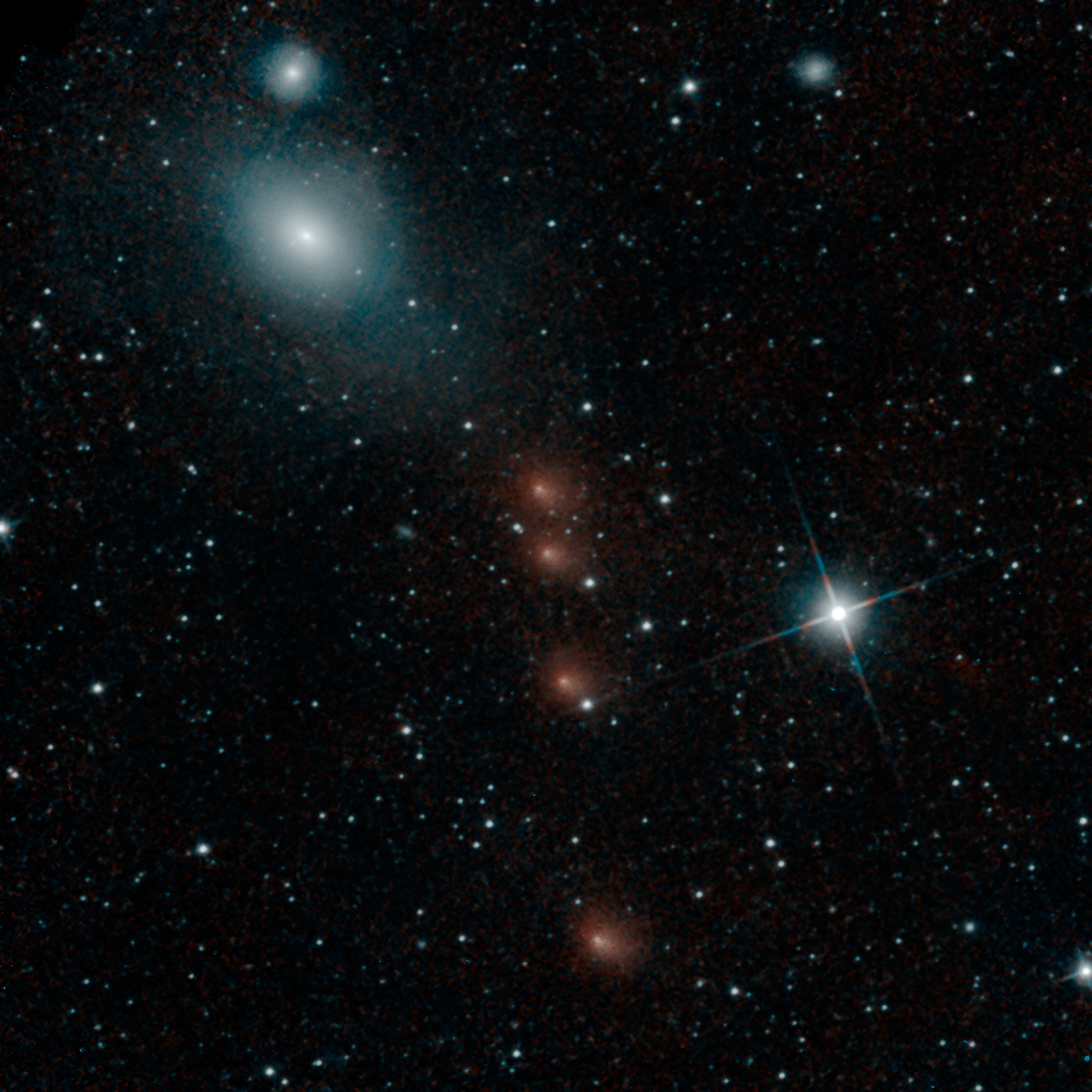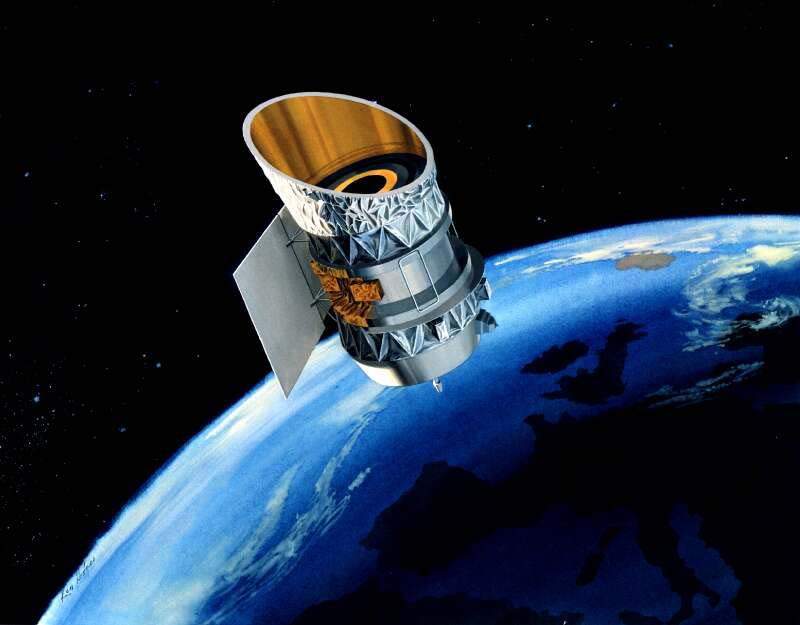|
2623 Zech
2623 Zech, provisional designation , is a stony binary asteroid from the inner regions of the asteroid belt, approximately 6.5 kilometers in diameter. It was discovered on 22 September 1919, by German astronomer Karl Reinmuth at Heidelberg Observatory in southwest Germany. It was named after German ARI astronomer Gert Zech. Orbit ''Zech'' is a stony S-type asteroid that orbits the Sun in the inner main-belt at a distance of 1.7–2.8 AU once every 3 years and 5 months (1,236 days). Its orbit has an eccentricity of 0.24 and an inclination of 4 ° with respect to the ecliptic. The body's observation arc begins with its official discovery observation, as no precoveries were taken, and no prior identifications were made. On 8 June 2002, ''Zech'' passed from the major asteroid 3 Juno. Diameter While "Johnston's Archive" estimates a diameter of 7.61 kilometers for ''Zech'', the ''Collaborative Asteroid Lightcurve Link'' assumes a standard albedo for stony asteroid ... [...More Info...] [...Related Items...] OR: [Wikipedia] [Google] [Baidu] |
Karl Reinmuth
Karl Wilhelm Reinmuth (4 April 1892 in Heidelberg – 6 May 1979 in Heidelberg) was a German astronomer and a prolific discoverer of 395 minor planets. Scientific career From 1912 to 1957, Reinmuth was working as an astronomer at the Heidelberg Observatory () an astronomical observatory on the Königstuhl hill above Heidelberg in southern Germany. He was a member at the minor planet studies group at Astronomisches Rechen-Institut between 1947 and 1950, and later became "Oberobservator" or chief-observer at Heidelberg Observatory until his retirement in 1957. Reinmuth obtained more than 12,500 precise astrometric measurements of minor planets' positions on photographic plates, an enormous accomplishment before computer-based assistance existed. Honours The outer main-belt asteroid 1111 Reinmuthia, discovered by himself at Heidelberg in 1912, was named in his honour (). Discoveries Among his most notable discoveries are the two near-Earth objects (NEOs) 1862 Apol ... [...More Info...] [...Related Items...] OR: [Wikipedia] [Google] [Baidu] |
Orbital Inclination
Orbital inclination measures the tilt of an object's orbit around a celestial body. It is expressed as the angle between a reference plane and the orbital plane or axis of direction of the orbiting object. For a satellite orbiting the Earth directly above the Equator, the plane of the satellite's orbit is the same as the Earth's equatorial plane, and the satellite's orbital inclination is 0°. The general case for a circular orbit is that it is tilted, spending half an orbit over the northern hemisphere and half over the southern. If the orbit swung between 20° north latitude and 20° south latitude, then its orbital inclination would be 20°. Orbits The inclination is one of the six orbital elements describing the shape and orientation of a celestial orbit. It is the angle between the orbital plane and the plane of reference, normally stated in degrees. For a satellite orbiting a planet, the plane of reference is usually the plane containing the planet's equator. For pla ... [...More Info...] [...Related Items...] OR: [Wikipedia] [Google] [Baidu] |
Magnitude (astronomy)
In astronomy, magnitude is a measure of the brightness of an astronomical object, object, usually in a defined passband. An imprecise but systematic determination of the magnitude of objects was introduced in ancient times by Hipparchus. Magnitude values do not have a unit. The scale is Logarithmic scale, logarithmic and defined such that a magnitude 1 star is exactly 100 times brighter than a magnitude 6 star. Thus each step of one magnitude is \sqrt[5] \approx 2.512 times brighter than the magnitude 1 higher. The brighter an object appears, the lower the value of its magnitude, with the brightest objects reaching negative values. Astronomers use two different definitions of magnitude: apparent magnitude and absolute magnitude. The ''apparent'' magnitude () is the brightness of an object and depends on an object's intrinsic luminosity, its Cosmic distance ladder, distance, and the Extinction (astronomy), extinction reducing its brightness. The ''absolute'' magnitude () describes ... [...More Info...] [...Related Items...] OR: [Wikipedia] [Google] [Baidu] |
Rotation Period
In astronomy, the rotation period or spin period of a celestial object (e.g., star, planet, moon, asteroid) has two definitions. The first one corresponds to the '' sidereal rotation period'' (or ''sidereal day''), i.e., the time that the object takes to complete a full rotation around its axis relative to the background stars ( inertial space). The other type of commonly used "rotation period" is the object's '' synodic rotation period'' (or ''solar day''), which may differ, by a fraction of a rotation or more than one rotation, to accommodate the portion of the object's orbital period around a star or another body during one day. Measuring rotation For solid objects, such as rocky planets and asteroids, the rotation period is a single value. For gaseous or fluid bodies, such as stars and giant planets, the period of rotation varies from the object's equator to its pole due to a phenomenon called differential rotation. Typically, the stated rotation period for a giant pl ... [...More Info...] [...Related Items...] OR: [Wikipedia] [Google] [Baidu] |
Donald P
Donald is a Scottish masculine given name. It is derived from the Gaelic name ''Dòmhnall''.. This comes from the Proto-Celtic *''Dumno-ualos'' ("world-ruler" or "world-wielder"). The final -''d'' in ''Donald'' is partly derived from a misinterpretation of the Gaelic pronunciation by English speakers. A short form of Donald is Don, and pet forms of Donald include Donnie and Donny. The feminine given name Donella is derived from Donald. ''Donald'' has cognates in other Celtic languages: Modern Irish ''Dónal'' (anglicised as ''Donal'' and ''Donall'');. Scottish Gaelic ''Dòmhnall'', ''Domhnull'' and ''Dòmhnull''; Welsh '' Dyfnwal'' and Cumbric ''Dumnagual''. Although the feminine given name '' Donna'' is sometimes used as a feminine form of ''Donald'', the names are not etymologically related. Variations Kings and noblemen Domnall or Domhnall is the name of many ancient and medieval Gaelic kings and noblemen: * Dyfnwal Moelmud (Dunvallo Molmutius), legendary kin ... [...More Info...] [...Related Items...] OR: [Wikipedia] [Google] [Baidu] |
Lightcurve
In astronomy, a light curve is a graph (discrete mathematics), graph of the Radiance, light intensity of a celestial object or region as a function of time, typically with the magnitude (astronomy), magnitude of light received on the ''y''-axis and with time on the ''x''-axis. The light is usually in a particular frequency interval or frequency band, band. Light curves can be periodic, as in the case of eclipsing binary, eclipsing binaries, Cepheid variables, other periodic variables, and Methods of detecting extrasolar planets#Transit photometry, transiting extrasolar planets; or aperiodic, like the light curve of a nova, cataclysmic variable star, supernova, gravitational microlensing, microlensing event, or binary as observed during occultation events. The study of a light curve and other observations can yield considerable information about the physical process that produces such a light curve, or constrain the physical theories about it. Variable stars Graphs of the ap ... [...More Info...] [...Related Items...] OR: [Wikipedia] [Google] [Baidu] |
NEOWISE
Wide-field Infrared Survey Explorer (WISE, observatory code C51, Explorer 92 and MIDEX-6) was a NASA infrared astronomy space telescope in the Explorers Program launched in December 2009.. . WISE discovered thousands of minor planets and numerous star clusters. Its observations also supported the discovery of the first Y-type brown dwarf and Earth trojan asteroid. ... . WISE performed an all-sky astronomical survey with images in 3.4, 4.6, 12 and 22 μm wavelength range bands, over ten months using a diameter infrared telescope in Earth orbit. After its solid hydrogen coolant depleted, it was placed in hibernation mode in February 2011. In 2013, NASA reactivated the WISE telescope to search for near-Earth objects (NEO), such as comets and asteroids, that could collide with Earth. The reactivation mission was called Near-Earth Object Wide-field Infrared Survey Explorer (NEOWISE). As of August 2023, NEOWISE was 40% through the 20th coverage of the full sky. Science o ... [...More Info...] [...Related Items...] OR: [Wikipedia] [Google] [Baidu] |
Wide-field Infrared Survey Explorer
Wide-field Infrared Survey Explorer (WISE, List of observatory codes, observatory code C51, Explorer 92 and MIDEX-6) was a NASA infrared astronomy Space observatory, space telescope in the Explorers Program launched in December 2009.. . WISE List of minor planet discoverers#WISE, discovered thousands of minor planets and numerous star clusters. Its observations also supported the discovery of the first Y dwarf, Y-type brown dwarf and Earth trojan, Earth trojan asteroid. ... . WISE performed an all-sky astronomical survey with images in 3.4, 4.6, 12 and 22 μm wavelength range bands, over ten months using a diameter infrared telescope in Geocentric orbit, Earth orbit. After its solid hydrogen coolant depleted, it was placed in Hibernation (spaceflight), hibernation mode in February 2011. In 2013, NASA reactivated the WISE telescope to search for near-Earth objects (NEO), such as comets and asteroids, that could collide with Earth. The reactivation mission was called Near-Eart ... [...More Info...] [...Related Items...] OR: [Wikipedia] [Google] [Baidu] |
Akari (satellite)
AKARI (ASTRO-F) was an infrared astronomy satellite developed by Japan Aerospace Exploration Agency, in cooperation with institutes of Europe and Korea. It was launched on 21 February 2006, at 21:28 UTC (06:28, 22 February JST) by M-V rocket into Earth Sun-synchronous orbit. After its launch it was named ''AKARI'' (明かり), which means ''light'' in Japanese. Earlier on, the project was known as IRIS (InfraRed Imaging Surveyor). Its primary mission was to survey the entire sky in near-, mid- and far-infrared, through its aperture telescope. Technical design Its designed lifespan, of far- and mid-infrared sensors, was 550 days, limited by its liquid helium coolant. Its telescope mirror was made of silicon carbide to save weight. The budget for the satellite was ¥13,4 billion (~). History By mid-August 2006, AKARI finished around 50 per cent of the all sky survey. By early November 2006, first (phase-1) all-sky survey finished. Second (phase-2) all-sky survey starte ... [...More Info...] [...Related Items...] OR: [Wikipedia] [Google] [Baidu] |
IRAS
The Infrared Astronomical Satellite (Dutch language, Dutch: ''Infrarood Astronomische Satelliet'') (IRAS) was the first space telescope to perform a astronomical survey, survey of the entire night sky at infrared wavelengths. Launched on 25 January 1983, its mission lasted ten months. The telescope was a joint project of the United States (NASA), the Netherlands (Netherlands Agency for Aerospace Programmes, NIVR), and the United Kingdom (Science and Engineering Research Council, SERC). Over 250,000 infrared sources were observed at 12, 25, 60, and 100 micrometer wavelengths. Support for the processing and analysis of data from IRAS was contributed from the Infrared Processing and Analysis Center at the California Institute of Technology. Currently, the Infrared Science Archive at IPAC holds the IRAS archive. The success of IRAS led to interest in the 1985 STS-51-F, Infrared Telescope (IRT) mission on the Space Shuttle, and the planned Shuttle Infrared Telescope Facility whi ... [...More Info...] [...Related Items...] OR: [Wikipedia] [Google] [Baidu] |
3 Juno
Juno (minor-planet designation: 3 Juno) is a large asteroid in the asteroid belt. Juno was the third asteroid discovered, in 1804, by German astronomer Karl Harding. It is tied with three other asteroids as the thirteenth largest asteroid, and it is one of the two largest stony ( S-type) asteroids, along with 15 Eunomia. ( Ceres is the largest asteroid.) It is estimated to contain 1% of the total mass of the asteroid belt. History Discovery Juno was discovered on 1 September 1804, by Karl Ludwig Harding. It was the third asteroid found, but was initially considered to be a planet; it was reclassified as an asteroid and minor planet during the 1850s. Name and symbol Juno is named after the mythological Juno, the highest Roman goddess. The adjectival form is Junonian (from Latin ''jūnōnius''), with the historical final ''n'' of the name (still seen in the French form, ''Junon'') reappearing, analogous to Pluto ~ Plutonian. 'Juno' is the international name for the as ... [...More Info...] [...Related Items...] OR: [Wikipedia] [Google] [Baidu] |




